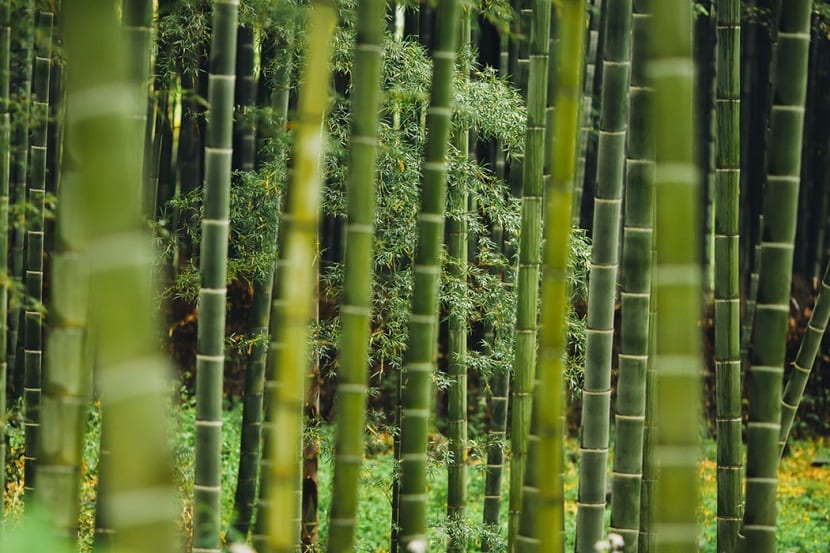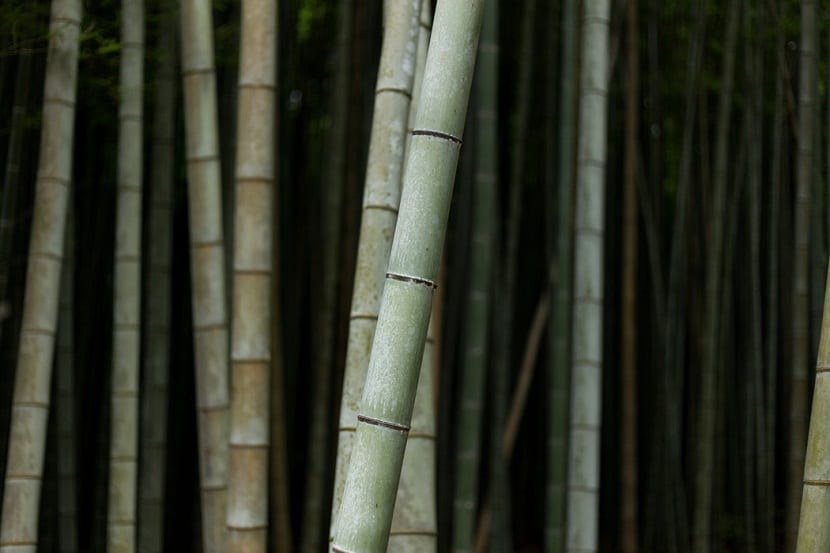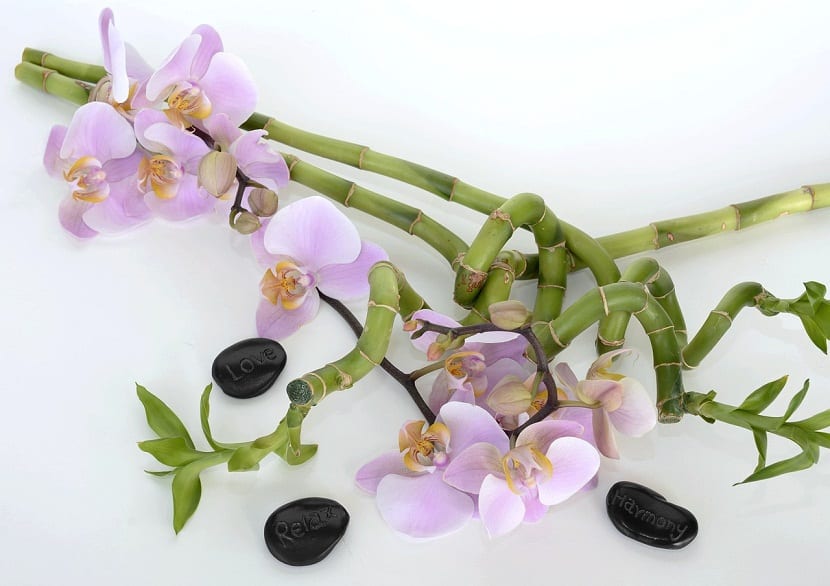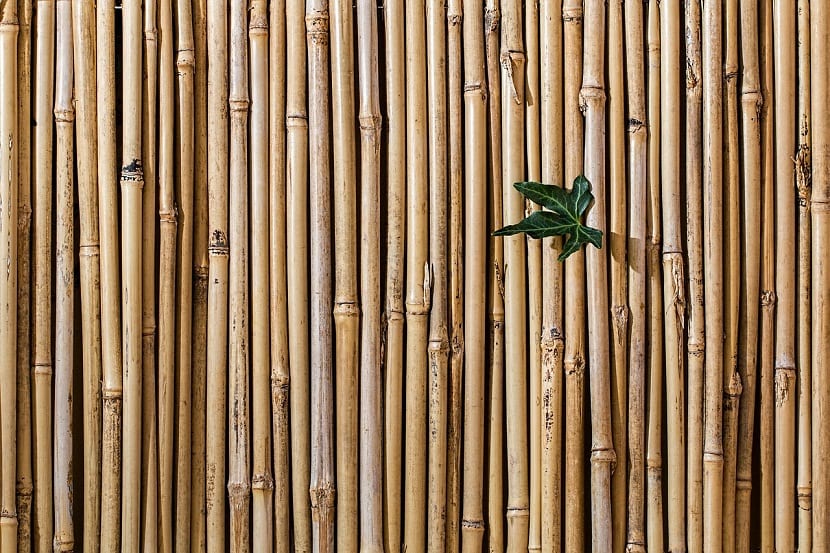
Bamboo also known by its scientific name Bambusoidae, is a long-lasting plant that has its origin in China, belonging to the grass family and it can measure approximately 25 meters, as long as it is in the best condition.
In places with sufficient humidity, this plant has a preference for direct sunlight and in turn has the ability to hold the shadow very well.
Bamboo Characteristics

La bamboo root it takes the form of a rhizome and from which the stems emerge, stems that are made up of knots and internodes that are quite marked.
Its flowering stage happens after quite a long time and its flowering consumes a lot of resources, which usually causes the plant to not fully recover, even going as far as death.
Bamboo can also be a small plant that can be even less than a meter in height and the stems can be up to half a centimeter in diameter. In the same way we can find giants with a measure of 25 meters high and about 30 cm in diameter approximately, however they are somewhat unusual, the most common being that they reach measure between one and ten meters tall.
Main species of bamboo
In the world we can find one great variety of bambooHowever, all these are part of one of the two main species of bamboo, which is quite convenient to know if we want to control its expansion, especially if we grow it in the garden.
Stoloniferous bamboo
This is a bamboo that develops through rhizomes that are thin and elongated that are joined by canes or also called underground stolons.
This type of bamboo has the ability to form a very strong structure that can be expanded up to about 50 cm deep and many meters away under the ground, causing sprouts to grow in other areas of the garden or even in the neighboring garden.
If we want to control the stoloniferous bamboo expansion and to avoid inconveniences with this kind of species, we have to plant them surrounded by a rhizome blocker that can prevent the stolons from spreading. We have to place the rhizome blocker around the area or the bamboo set and not separately.
Tussock growing bamboo
This type of bamboo does not have the ability to form stolons, on the contrary, its development is based on rhizomes that are short and thick forming a large number of buds that are distributed as branches under the ground. Therefore we do not need to put underground rhizome blockers.
Tussock bamboo produces a large amount of reeds that are thin and close together. They grow to between one and three meters tall and generally prefer a tropical climate, however they are ideal for growing in the winter.
Bamboo care

The soil has to be quite loose and have the ability to retain water fairly well, that is prepared and at the same time rich, with excellent drainage and at the same time that it has a lot of organic matter, apart, we have to water very frequently and with plenty of water.
La flowering stage of bamboo occurs after 80 years, after this the plant dies.
The compost is something that we do not have to forget since it is of great help so that new shoots can be born and in turn for the expansion of the plant, so the ideal fertilizer for bamboo is that of organic material Since it is a rhizome, the large amount of nutrients that a chemical fertilizer has can cause serious damage to the plant.
On the other hand, the pests that most frequently attack this plant are the aphids, rust, spider mites and powdery mildew.
Bamboo multiplication
The multiplication of bamboo can be done in two different ways, which are the following:
By grouping divisions:
It's about having to separate propagules from tillers, since these propagules are or have to be in each one of the aspects, complete plants.
From cuttings of the reeds
By the vegetative fractions from cane cuttings that are complete until the cutting of mature branches, with arrangements of buds that are larger or smaller that come from the aerial parts of the plant.
We have to carry out the multiplication before the annual stage of active growth of the buds begins in the axis that is involved, this happens in the months of March and April. The size of the propagule has to keep the root system of the propagule or stem mature with a minimum of three active buds.
The double crochet must be less than three years old, but if they are propagules of group divisions, the age of the rhizome is not of great importance.
For the multiplication of this we have to cut the bamboo rods, the bushes or the tillers, and then immerse the rods in an aqueous solution of Radix 10.000 at a rate of 1 kg per 200 liters of water.
We mix the substrate in proportions of 40:40:20; with black earth, leaf earth and also worm castings respectively, we fill the container, we place the divided plants or the rods, we arrange the containers on shelves and finally, it is most recommended that we use programmed watering.
How to prevent bamboo from invading the garden?

Bamboo is a wonderful plant that we can grow either in a pot or in the soil of our garden. Its growth is quite accelerated and it can reach several meters high in a short time. It is a fairly resistant plant and does not need much care.
Bamboo, apart from being flexible, is quite hard, the cane of this plant has a large number of uses, which can replace or even improve the classic wooden ones. All this strength and flexibility comes from its rootsSince these roots are so strong that they can pass through the bricks and also through the masonry material, however, there is currently a material that can be faster, easier to place and is low cost.
By this we mean root barriers that are made of polypropylene plastic With a thickness of one millimeter, barriers that are quite rigid and using them is something quite simple, since when preparing the hole where we want to plant our bamboo we have to cover the entire area that we do not want the plant to overcome with this strong plastic sheet.
It is important to remember that we must install the barrier correctlyIn the same way, we must take into account that the roots of bamboo have the ability to expand until they reach the ground level.
I really liked the information, very useful, there is an error in the text:
"The multiplication of bamboo can be done in two different ways, which are the feelings:" the word feel.
Greetings.
Corrected. Thanks for the warning.
Hello, I have bought some land and I have found that in a very humid area the previous owner planted bamboo. Now I have the problem that he has invaded a large part of the terrace. I have put a machine to start pulling out the roots and it has done it at a depth of about 40/50 meters. Now I am removing the clods from the roots to burn it, but I see that in some areas new shoots keep coming out. What I can do? Thank you
Hello José María.
Have you tried pouring water on it? very hot? If you do it regularly, surely there will come a time when they will no longer sprout.
Of course, if you have already planted plants in that area, be careful that it does not reach them because otherwise they would burn too.
A greeting.
What kind of leaf does bamboo have?
Good morning, my neighbor cut a bunch of bamboo for the snow theme myself or I picked it up to decorate my terrace. The question is, can I make roots grow and last? Should I put it in water so that roots come out first? I plant it now they are cut and I don't know how to do it? Some branches are up to two meters long and the canes are very green. Thank you.
Hi Joaquin.
Bamboos multiply by division of rhizome; that is, by roots. If they don't have, they will dry up 🙁
Regards!